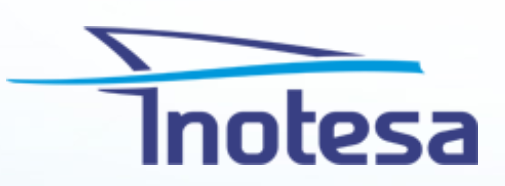Current Status
In progress
Description
HY2FISH focuses on the most promising scalable technologies with low
CAPEX, easy to deploy and suitable to be installed in a broad range of +12m
fishing ships to provide hydrodynamics, electrical power management, optimized
propellers with reduce underwater noise, solar electricity generation and full electrical
propulsion (hydrogen and batteries), sensing and digitalization and hull
appendages. HY2FISH aims to achieve procedures and technologies to secure the
reduction of fuel consumption and GHG emissions up to 40% compared to the
original design and up to 100% when the energy (electricity and hydrogen) will
be produced from renewable sources (wind, photovoltaic, geothermal,
hydroelectrical, etc..). The solutions proposed will be designed as plug and
play in a broad range of medium to large size fishing vessels and with
reasonable CAPEX and OPEX needs, ensuring upscaling of the proposed solutions
after project implementation. The main solutions are:
- Innovative design by the use of hull appendages
(e.g. bulbs, spray rails) that allow to improve hull hydrodynamics, to minimize
the water friction and reduce external and underwater noise. Hull appendages
will be designed to be manufactured with recyclable resins reinforced with
carbon/glass fibres.
- Propulsion systems based on Hydrogen Rotary (Wankel) genset and fuel cells and its hybridization with marine batteries.
- Integration of multi-functional optical fibre sensors for fishing ships monitoring.
- Smart energy balance system will be integrated based on external data and data collected by the sensors.
- EMS and PMS for optimized battery pack, fuel cell, energy consumption in the vessel.
- Low-weight and flexible photovoltaic panels (FPV) based on silicon cells and flexible connector to be integrate in ship.
- Retrofit of a +12 m traditional fishing ship located currently in the Valencia Mediterranean coast, but she will be retrofit in the Galicia Atlantic coast having harsh fishing conditions. integrará un sistema inteligente de balance energético basado en datos externos y datos recopilados por el sensor.
Objectives
- Objective 1: To design hull appendages and propeller for the demo fishing ships.
- Objective 2: Using optical fibre sensors for fishing ship monitoring to allow decisions related to smart energy balance and predictive maintenance.
- Objective 3: Low pressure tanks with high hydrogen capacity.
- Objective 4: To install a rotary-hydrogen-fuelled generator and hydrogen fuel-cells in combination with electric motor, to maximize autonomy of shipping by 10% due to introducing smart energy balance system at zero CO2 emissions.
- Objective 5: Si-based panels suitable for waterborne applications.
- Objective 6: Innovative EMS/PMS solutions to holistic management of the ship energy.
- Objective 7: Industrial integration of all the solutions proposed.
- Objective 8: To demonstrate the level safety compared to applicable safety code, as well as environmental & economic sustainability and feasibility of the developed processes and products.
- Objective 9: Design-for-retrofitting methodology based on standardization and modularization principles. Standardization is key for replicability, whilst modularization is important for costs reduction.
Expected Results
Short and medium term:
- To develop and demonstrate viable solutions for fishing vessels which improve the energy performance, including reducing greenhouse gas (GHG) emissions and costs.
- To increase knowledge on the challenges, benefits and impacts (including economic, environmental and in terms of health and safety of fishers) of different technologies aimed to improve the energy and emissions performance of fishing vessels.
- To strengthen understanding of the potential to adapt existing technologies to the fishing sector.
- To raise awareness of and broaden the possibilities offered to fishers to become more energy efficient and initiate the energy transition of fishing vessels.
Long term:
- Improving the resilience and economic viability of the EU fishing fleet.
- Improving understanding of technical, social, legal, regulatory and policy barriers to energy transition in fisheries.
- Reduced fuel consumption and GHG emissions from fishing vessels and improved energy efficiency in their range of activities.
- Accelerating the adoption of new technologies in the fisheries to foster energy transition.
- Improving the business environment and raising awareness among investors.
- Support the European Green deal objectives and other European and International directives.
Contribution
The HY2FISH project contributes to the following objectives of the Blue Growth Plan:
- Innovative Port: the project would allow optimize Si-PV for marine applications, as well as improve the hydrogen storage capacity of ships by using Type IV tanks and reduce energy consumption, among other innovations.
- Connected port: This project would achieve greater ship autonomy by 10% using hydrogen and hydrogen fuel cells, as well as reduce energy consumption by at least 20%, and reduce radiated underwater noise by 5-10 dB. It will provide a higher load capacity and less weight of the vessels due to the rotary generator.
- Green port: HY2FISH is expected to contribute to reducing GHG emissions through the inclusion of appendices and optimization of ship propeller coefficients, and through the EMS/PMS management system. It also aims to reduce underwater noise and fuel consumption by installing fibre optic sensors on ships. An increase in hydrogen capacity and a reduction in CO2 emissions is expected from the use of hydrogen and hydrogen fuel cells, and an increase in hydrogen storage capacity of 10% hydrogen from the use of Type IV tanks.
- Inclusive port: The implementation of this project would bring greater inclusion to the port due to its risk-reduction approach compared to the current plan, as well as the participation of stakeholders to share good practices. In addition, it contributes to the achievement of the objectives of other missions such as the Mission to support the decarbonization of maritime transport, the European Green Deal or the EU Biodiversity Strategy for 2030.
Project funded by the European Commission (Call: Pilot Project on a demonstrator fishing vessel to promote energy transition in the fisheries sector (PPPA-2024-FISHVESSELDEMO) and public and private financing.











